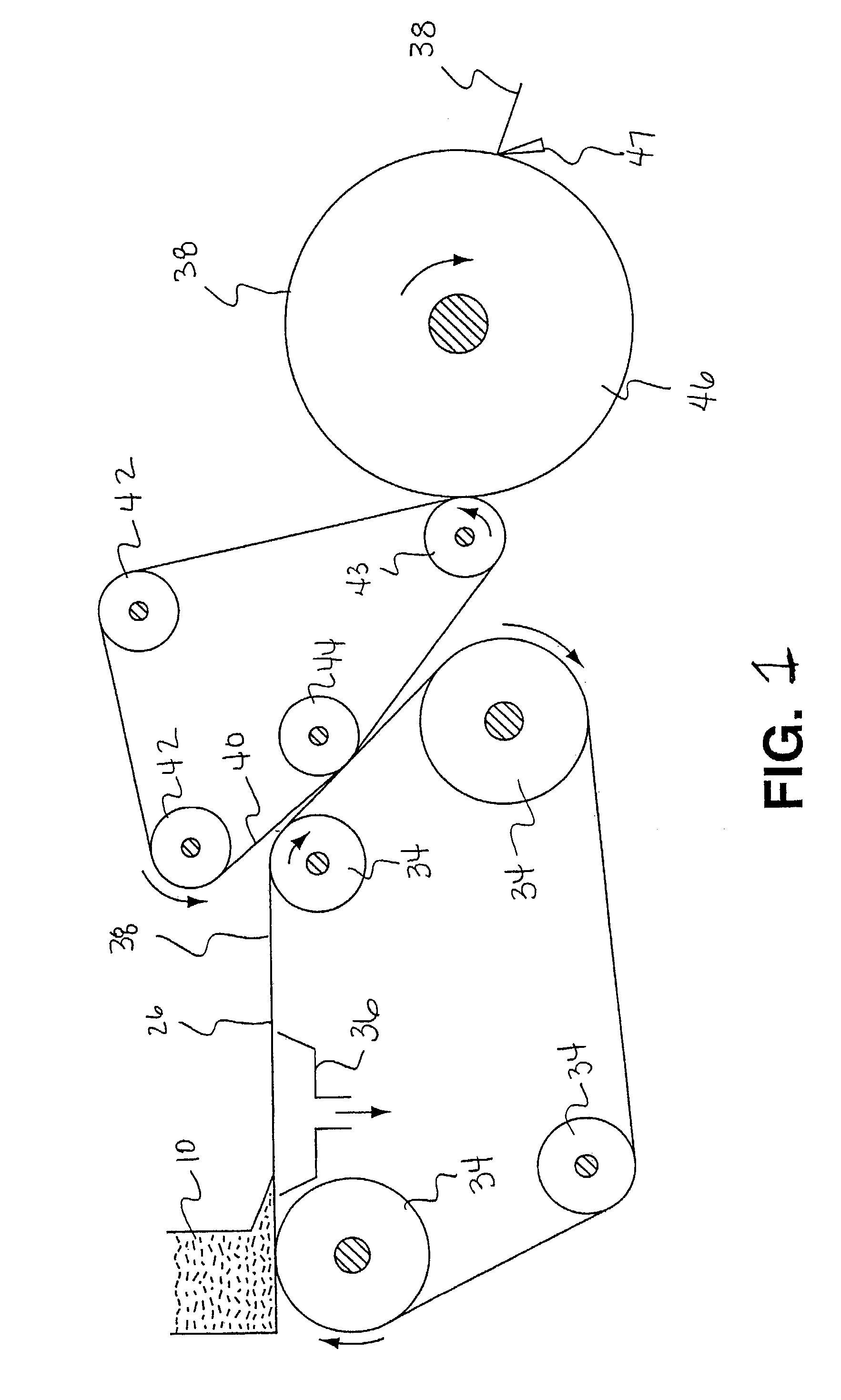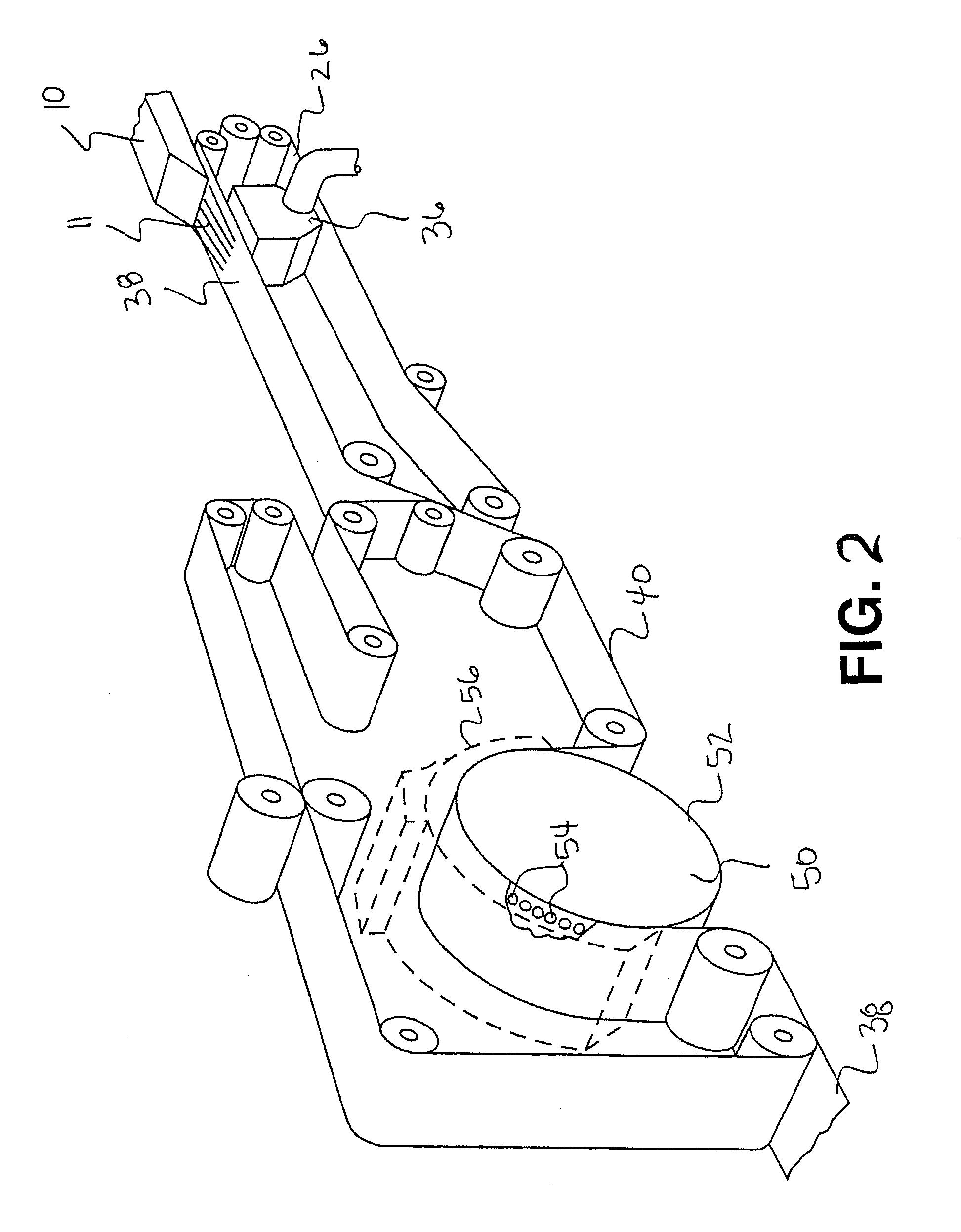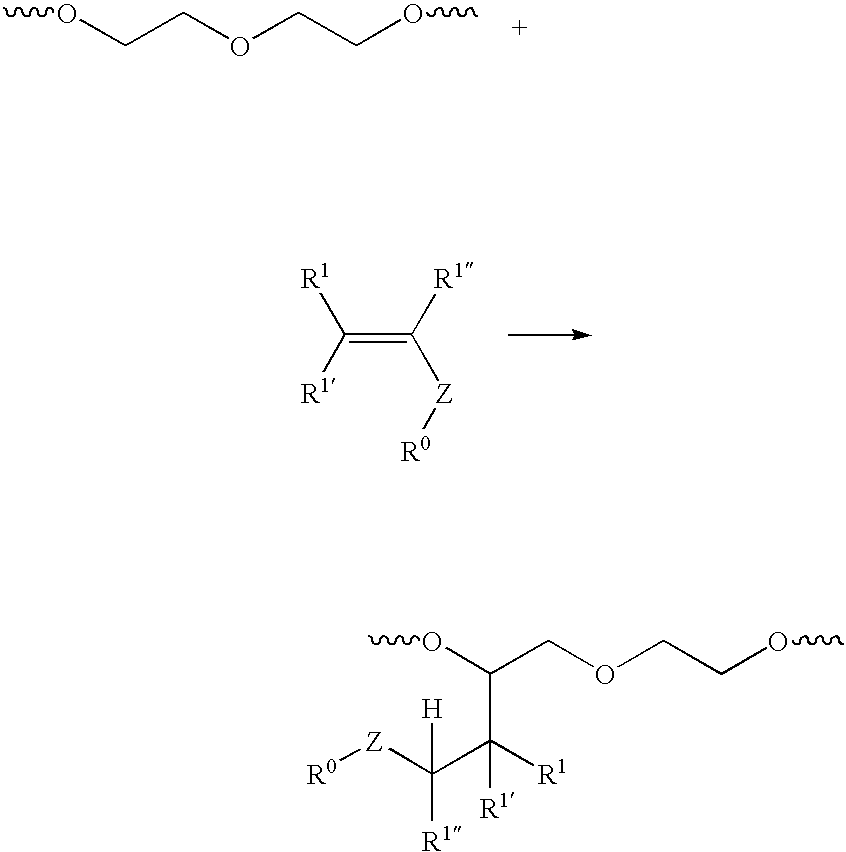Wiping products having a low coefficient of friction in the wet state and process for producing same
a technology of wet state and wet state, applied in the direction of synthetic resin layered products, non-fibrous pulp addition, transportation and packaging, etc., can solve the problems of high level of wet sloughing, difficult to put on or take off clothing, etc., and achieve the effect of improving the feel
- Summary
- Abstract
- Description
- Claims
- Application Information
AI Technical Summary
Benefits of technology
Problems solved by technology
Method used
Image
Examples
example no.1
EXAMPLE NO. 1
[0118]A derivatized polyethylene oxide was formed having the following formula:
[0119]
[0120]The polyethylene oxide used in this example had a molecular weight of 100,000 and incorporated 6 percent by weight silanol groups.
[0121]An aqueous solution containing 1.5 percent of the above silanol functional high molecular weight polyethylene oxide was prepared by dissolving the polymer in distilled water under high shear. A solution was placed in a spray bottle and sprayed on an uncreped through-air dried bath base sheet containing no chemicals. The base sheet was a single ply uncreped through-air dried product having a basis weight of 18.5 pounds per 2,880 sq. ft. The amount of base sheet used was 0.2 grams with 1.0 grams of solution added to the sheet. The sheet was then dried in a convection oven at 120° C. for five minutes.
example no.2
EXAMPLE NO. 2
[0123]High molecular weight polyethylene oxides having molecular weights of 400,000 and 2,000,000 were tested on the same base sheet and according to a similar process as described in Example No. 1. Upon wetting, the treated base sheets were found to have enhanced lubricity.
[0124]Low molecular weight polyethylene glycols having a molecular weight of 8,000 and lower were also tested and found not to produce the same lubricity effects.
example no.3
EXAMPLE NO. 3
[0125]An acrylate copolymer containing polyethylene moieties was also tested according to the procedure described in Example No. 1. The acrylate copolymer had the following structure:
[0126]
wherein p=0.8, q=0.1 and r=0.1. The monomers were incorporated into the polymer in random fashion.
[0127]A base sheet treated with an aqueous composition containing the above polymer was wetted. It was observed that the base sheet had enhanced lubricity.
PUM
| Property | Measurement | Unit |
|---|---|---|
| wet out time | aaaaa | aaaaa |
| degree of polymerization | aaaaa | aaaaa |
| temperature | aaaaa | aaaaa |
Abstract
Description
Claims
Application Information
 Login to View More
Login to View More - R&D
- Intellectual Property
- Life Sciences
- Materials
- Tech Scout
- Unparalleled Data Quality
- Higher Quality Content
- 60% Fewer Hallucinations
Browse by: Latest US Patents, China's latest patents, Technical Efficacy Thesaurus, Application Domain, Technology Topic, Popular Technical Reports.
© 2025 PatSnap. All rights reserved.Legal|Privacy policy|Modern Slavery Act Transparency Statement|Sitemap|About US| Contact US: help@patsnap.com



